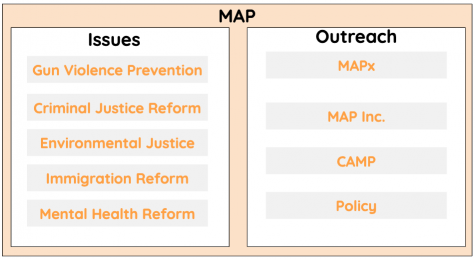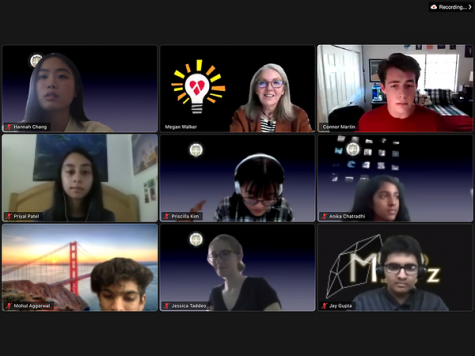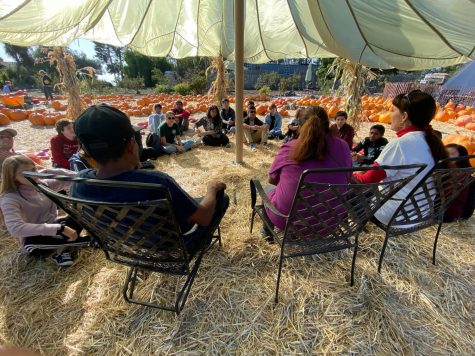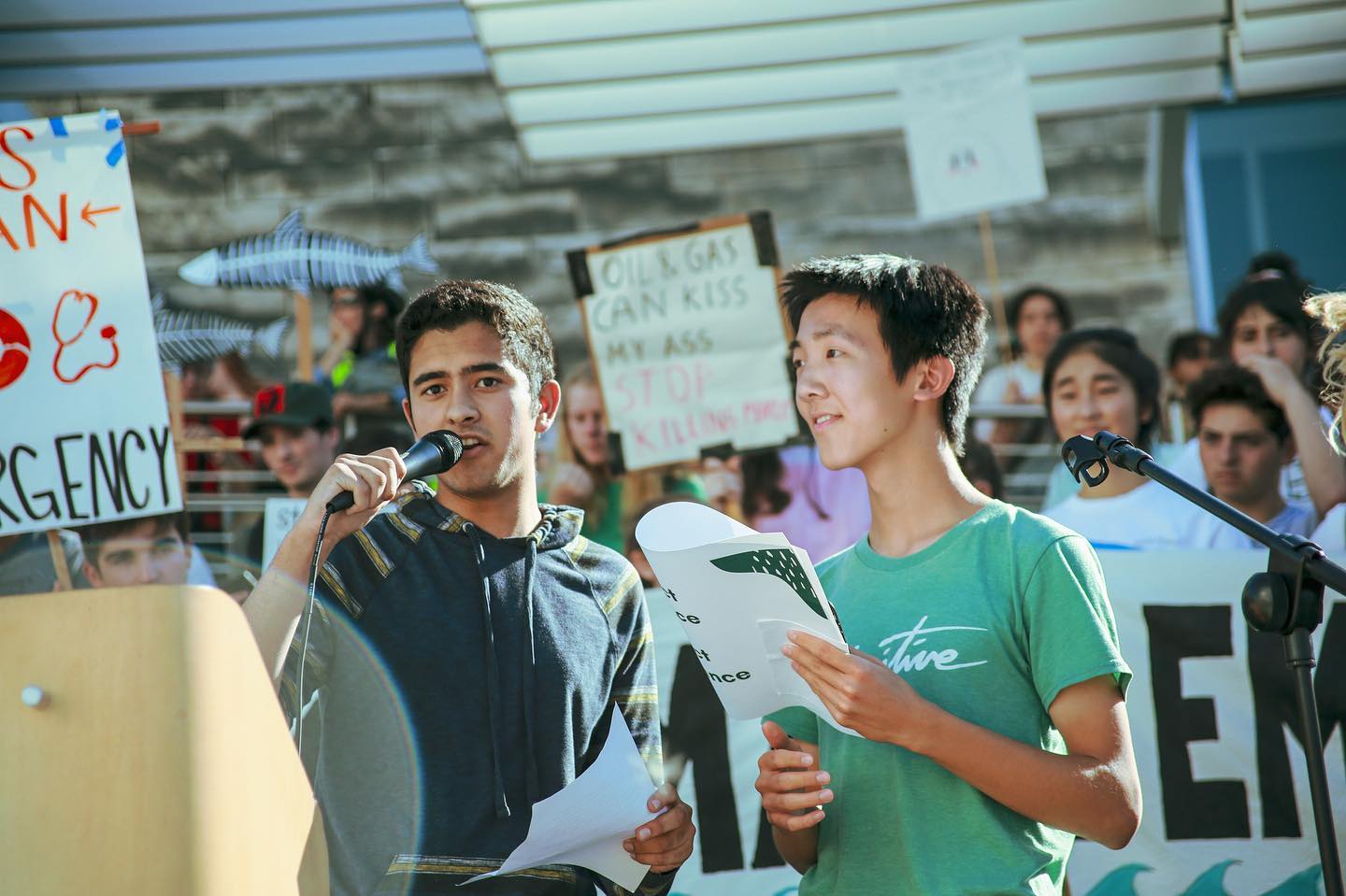MAP in the Era of COVID-19
October 15, 2020
With countless events being cancelled and activities becoming inaccessible, it seems as if COVID-19 has put life on hold. However, despite the underlying sense of stagnation in our daily lives, one group continues to seek change in a time when change feels faraway: our school’s student-led advocacy team, MAP, or the Mitty Advocacy Project.
The Vision
From the integration of racial justice to new outreach initiatives, MAP is pushing forward even during these hard times to make sure the youth have a voice. This is our age and we have to fight to make our vision of the future a reality. Despite the change of landscape in our world, MAP is continuing to try to make a difference to build a more just, positive future for everyone.
MAP–this is our lane.
MAP’s Structure This Year
 This year, MAP has nine key units. The five elected issue teams—Environmental Justice, Criminal Justice Reform, Gun Violence Prevention, Immigration Reform, and Mental Health Reform—focus on their individual issues through an Advocacy, Grassroots, and Education approach (AGE Model). The Policy division oversees legislative and policy efforts. MAPx—one of the outreach teams—focuses on civic engagement around non-legislative methods and projects to raise awareness. The newest MAP divisions formed this year are MAPInc., and CAMP. MAPInc. focuses on international advocacy, school networking, and curriculum, while CAMP is dedicated to creative digital advocacy, employing online platforms like social media to raise awareness.
This year, MAP has nine key units. The five elected issue teams—Environmental Justice, Criminal Justice Reform, Gun Violence Prevention, Immigration Reform, and Mental Health Reform—focus on their individual issues through an Advocacy, Grassroots, and Education approach (AGE Model). The Policy division oversees legislative and policy efforts. MAPx—one of the outreach teams—focuses on civic engagement around non-legislative methods and projects to raise awareness. The newest MAP divisions formed this year are MAPInc., and CAMP. MAPInc. focuses on international advocacy, school networking, and curriculum, while CAMP is dedicated to creative digital advocacy, employing online platforms like social media to raise awareness.
Although the pandemic and its inevitable circumstances have presented various challenges to MAP and the world at large, these new times have simultaneously opened up a wealth of promising opportunities for MAP as a club and for advocates around the world. In a typical school year, MAP has two major advocacy trips, one in the fall to Washington, D.C., to advocate for legislative change on the federal level, and one in the spring to Sacramento, concerning the state level at CYAN, the Catholic Youth Advocacy Network. However, given public health regulations and safety concerns prompted by the coronavirus, MAP is currently unable to attend such wide-ranging trips and events.
Nevertheless, MAP is working hard to ensure that everyone has the opportunity to be involved and participate just as much as they would be able to during a regular school year, or at least as close as possible.
Online Initiatives

In fact, the online context has introduced the possibility of using different virtual platforms like Zoom to meet with legislators and social media avenues to more effectively advocate during these times. The shift online eliminates limitations like transportation and commute time, which means that MAP can attend more legislative meetings throughout the entire year as well as bring more MAP members to those meetings. This flexible schedule is especially important when it comes to the local front, as frequent meetings with local legislators can allow us to push harder for local policies on a more grassroots level. As MAP Co-President Connor Martin remarks, “A lot of work gets done on the local level–I think that’s where MAP can have the greatest impact.”
The advocacy scene has similarly advanced rapidly into the digital space. In the digital realm, MAP has invested in different online platforms, reorganizing communication networks and utilizing mediums such as their website and social media (follow @mittyadvocacyproject on Instagram!) to consolidate information and better raise awareness.
Over the summer, team members Erin Larmore and Amy Gruber produced a video series for the Mental Health’s team digital campaign on healthy coping mechanisms during quarantine. Erin shares:
“Before the quarantine was set in place, the mental health team was working on developing a curriculum teaching students about mental disorders, stress, how to reach out for help, and coping mechanisms. We planned to teach this curriculum during the week before finals during religion classes to replace the Mind, Body, and Spirit unit, which was a curriculum found to be relatively unhelpful for students who wanted to manage their stress.
“However, once in quarantine, we decided to shift the curriculum focus to maintaining good mental health during quarantine by going over numerous skills that could help people, including cognitive behavioral therapy, meditations, and exercises, as well as providing resources that could help students gain access to mental health services (links to organizations that could locate more affordable therapists in your region, organizations that help pay for medication, and meditation apps). The video series was aimed at students in particular in the hopes that amid the stress and changes they were experiencing at school, they would be able to at least alleviate their stress and anxiety by using some of the skills we covered.”
Other accessible sites like the BLM resource bank that MAP compiled in a carrd.co over the summer, in response to the resurgence of protests against police brutality and racial injustice, provide numerous awareness-raising and self-education resources. At large, MAP has dedicated a significant amount of effort to implementing and sorting out various communication channels to ensure that everyone, both MAP members and the overall Mitty community, can stay passionate and involved.
In the Larger Community
Beyond Mitty, MAP is also looking to generate greater local community involvement, for example in Santa Clara County. An example of how MAP is trying to go about this is by planning town halls with local representatives to discuss crucial issues.

As for trips with a more immersion-like experience, such as the Farmworker Reality Tour where MAP members meet and listen to the stories of undocumented migrant farmworkers in Watsonville or Delancey Street to see rehabilitative justice in action for ex-convicts, MAP Co-President Connor explains, “[We can] leverage Zoom for at least the legislative components, but those different trips, I don’t think there’s a real substitute for in this context, unfortunately.” Quite plainly, some events are inevitably cut down by this current situation, and that is out of our control. However, MAP is trying to make other opportunities available, possibly including socially distanced events at AMHS on campus.
MAPInc: A Pioneer in International Youth Advocacy
To extend their commitment in supporting youth advocates beyond the local community, MAP has forged a new relationship with Catholic Relief Services (CRS) this year to engage with international advocacy.
CRS’ mission is grounded in supporting international communities, such as refugees fleeing conflict or victims of natural disasters. In line with these ideas, the “Inc.” part of MAPInc. is an acronym that stands for: international advocacy, networking, and curriculum. Lead Amy Gruber shares: “We are partnering with CRS who is creating a nationwide network of high schools who have programs that are devoted to advocacy like MAP.” MAPInc. also communicates with programs across many other schools—sharing ideas and effective advocacy methods that can be executed to increase awareness. As a trailblazer in international youth advocacy, MAPInc. is currently creating video and pamphlet resources to share with other schools so that they, too, can set up their own advocacy programs.
Want to join the movement?
Town hall meetings, guest speaker series, and Voter Awareness Week for the upcoming election are upcoming virtual opportunities that will be made available this fall.
Interested in these initiatives and activism opportunities? Learn more about or join the MAP program by attending weekly Thursday meetings via Zoom using this link.
